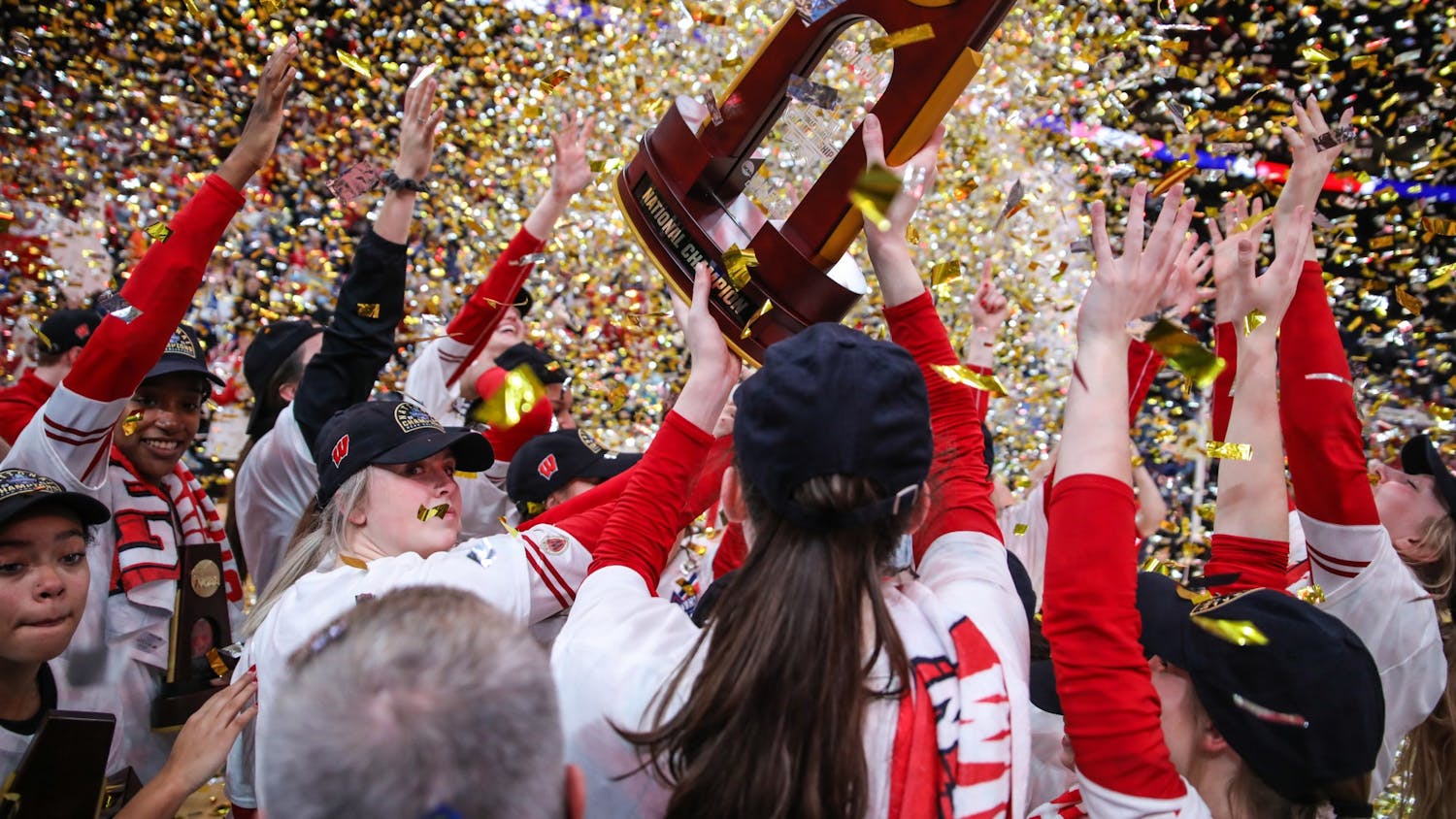The Badgers lost a lot of talent on defense last season after D’Cota Dixon, Ryan Connely and T.J. Edwards all graduated. But if anything is clear from UW’s 49-0 win over USF, it’s that Jim Leonhard’s defense can still compete at an elite level.
UW’s stout defensive performance along with South Florida’s risky defensive scheme allowed the Badgers to dominate the Bulls from the first drive. Senior linebacker Chris Orr and junior linebacker Mike Maskalunas both shut down South Florida’s offense by making decisive and accurate reads.
Orr, Maskalunas and the Badger defensive line took advantage of an undisciplined and unathletic USF offensive line that could neither protect quarterback Blake Barnett nor open holes for their running backs. UW held USF to just 157 yards total offense and forced two interceptions from Barnett.
An example of the difference between the two defenses was how each defensive line reacted to screens.
On screen passes, offensive linemen typically take two kick steps back into their pass protection before releasing from that block and finding and blocking linebackers or defensive backs downfield. A disciplined defensive linemen will realize that it’s a screen and, instead of going upfield towards the quarterback, stay on the line of scrimmage, find the running back and make the tackle or force an incompletion.
However, USF’s scheme and undisciplined defensive linemen made stopping screens and other misdirection almost impossible. Throughout the game, USF’s defensive line shot gaps in order to get in the backfield and stop UW’s rushing attack.
While it worked occasionally, it also allowed the Badger offensive line to get downfield more often and block the linebackers. That meant if Jonathan Taylor could make any of the big, slow defensive linemen miss, he’d often be one-on-one with a defensive back.
Because of the size discrepancies between Wisconsin’s offensive line and USF’s defensive line, USF’s coaching staff had to take more risks than they normally would. Had USF’s defensive line played hands-on defense, it would’ve been even more of a blowout.
USF hoped they could take risks and stop the Badgers on early downs and force Jack Coan to make difficult throws on third and long. When the Badgers play bigger teams with elite defensive lines, UW won’t be able to rely on their opponents mistakes for points and momentum.
However, give credit to Paul Chryst and the UW coaching staff for mixing formations and including plays and concepts seemingly never used by a Wisconsin offense. The Badgers incorporated run-pass-options (RPOs) along with pistol formations which kept USF’s offense off-balance.
Changing formations and play-types forces opposing teams to stay more disciplined and spend more time throughout a game week preparing for a more diverse Badger offense. While it’s still difficult to judge just how good the Badgers are this year, it’s nonetheless encouraging that the offense has expanded and the defense is still fundamentally sound.






